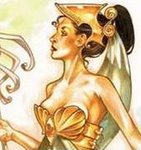We got there and first he took us to this little place:

Which I was very proud of myself for knowing that it was a vernal pool, before he even said it. Vernal pools are puddles that always show up in the same spot. I thought the dip at the end of my driveway was a vernal pool, but it turns out it's just a drainage problem.
Then we started our walk. Thankfully it was not a hike. Along the way he pointed out a bazillion white oaks, which are some of the few plants we actually will have to identify for this class. This is a white oak and white oak leaves up close.


I can't remember the name of this next plant, but you can eat the little purply-blue berries. They're very bitter and usually only birds eat them.

This is eastern hemlock. Unlike the hemlock that killed Socrates, this is not poisonous, and is in fact edible. The leaves are, anyway.

This is Lee Bog. It's kind of pretty. The little scraggly evergreen trees are black spruce, which only grows in bogs, at the timberline, and in the tundra. They need it to be rather cold and harsh. Bogs are cold because the water in them is blocked by the vegetation, so it can't circulate.


Notice the other pine trees are kind of scraggly. That's because bog soil doesn't have a lot of nutrients.
This is the sphagnum moss, which is what creates the bog. Rotting sphagnum makes the bog soil jiggle when you poke it with a stick, like jello pudding. Muddy, stinky, freezing cold jello pudding.

The nearby trees are all yellowed because of chlorosis, which means they aren't getting enough nutrients.

Bogs are usually surrounded by plants that do well in tundra environments too. This is reindeer moss, so called because reindeer like to eat it.

We walked through the woods, too, and he pointed out the canopy effect-- plants can't grow because the caonpy takes up all the light.

This is the American Chestnut.

It's almost extinct because humans accidentally introduced a chestnut fungus to the New World that the European and Asian chestnuts were resistant to, but the American one was not. They are incredibly rare; apparently there are only about three or four trees that are known to be breeding and that's only because their root systems are all but immortal, so when the tree dies off from the fungus the roots send up new trees. Which then get attacked by the fungus. Sucks to be an American chestnut.
 And this is the pretty foliage on one of the trees by Parsons Hall.
And this is the pretty foliage on one of the trees by Parsons Hall.So that was my Tuesday field trip.







